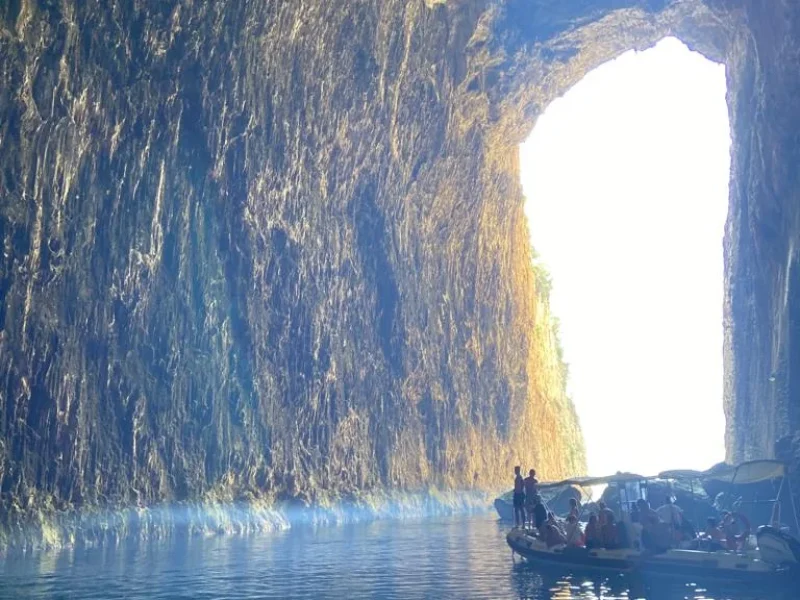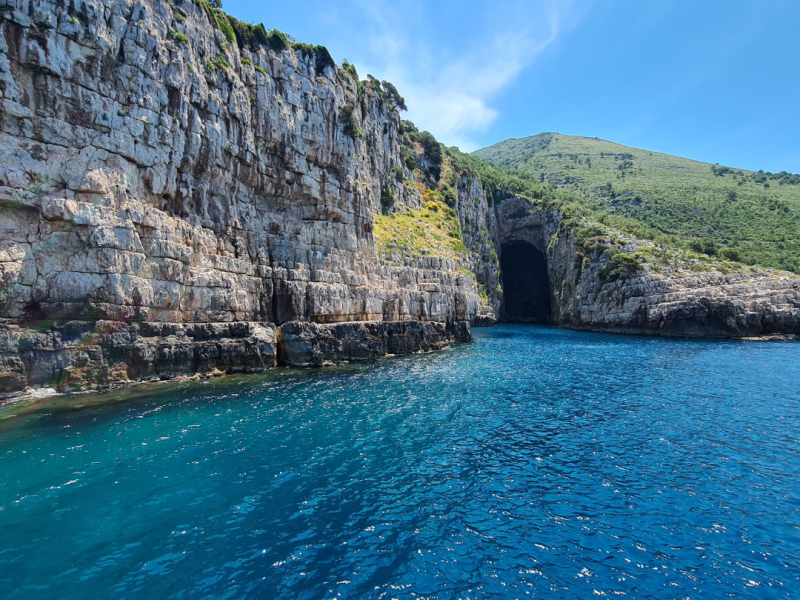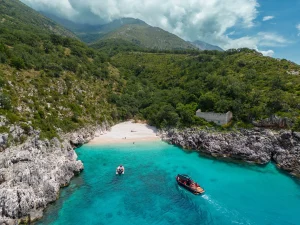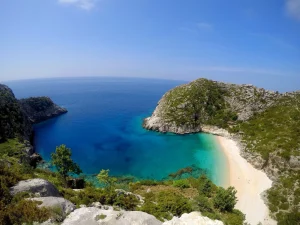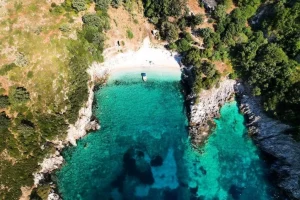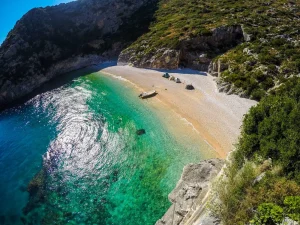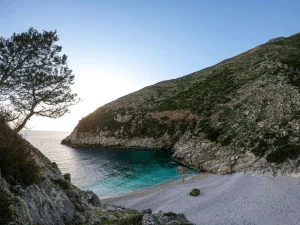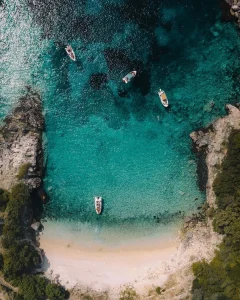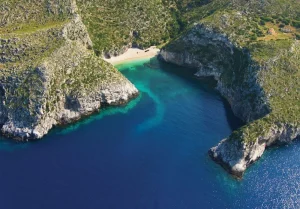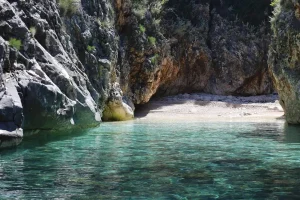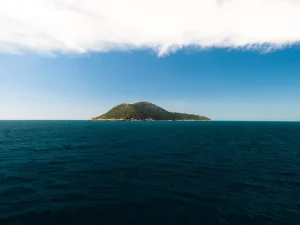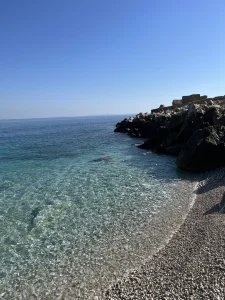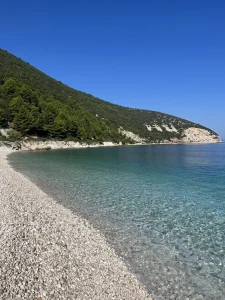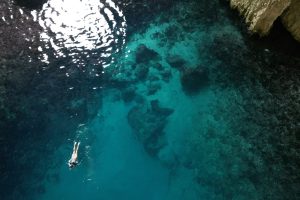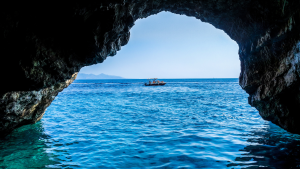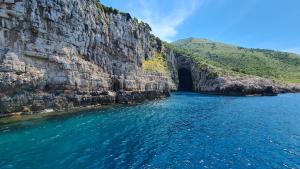Haxhi Ali Cave
Discovering Haxhi Ali Cave in the Karaburun Peninsula
Albania, renowned for its breathtaking landscapes, is home to many hidden treasures, one of which is the fascinating Haxhi Ali Cave. Nestled in the Karaburun Peninsula near the coastal city of Vlore, this remarkable cave offers visitors a glimpse into both history and nature, leaving them in awe of its beauty and significance.
A Geological Marvel
Haxhi Ali Cave is a natural limestone formation shaped over millions of years. Spanning approximately 80 meters in length, it boasts intricate stalactite and stalagmite formations that have long intrigued explorers and scientists.
Although its precise age remains uncertain, experts believe the cave dates back to the Paleozoic era. Its striking geological features reveal fascinating insights into the Earth’s ancient history, making it an intriguing site for archaeologists and geologists alike.
Exploring the Cave
In recent years, Haxhi Ali Cave has gained popularity among tourists eager to witness its mesmerizing beauty. Since it is accessible only by boat, the journey to the cave is an adventure in itself, offering breathtaking views of the Albanian coastline. Once inside, guided tours allow visitors to navigate the cave’s winding passages, uncovering unique rock formations and hidden corners. To ensure the preservation of this natural wonder, explorers are encouraged to follow safety guidelines and respect its delicate environment.
Boat Trip to the Cave
Reaching Haxhi Ali Cave requires a scenic boat ride from Vlore to the Karaburun Peninsula. Tripswithboat provides affordable excursions to this stunning destination, allowing visitors to enjoy the spectacular coastline before arriving at the cave.
For those seeking a more immersive experience, the cave’s emerald green waters offer a perfect opportunity for swimming. The cool, crystal-clear water provides a refreshing escape, while snorkeling enthusiasts can explore the vibrant marine life beneath the surface.
The History of Haxhi Ali Cave
The cave is named after Haxhi Aliu, a legendary Albanian warrior and sailor from Ulcinj, who sought refuge there with his son. Over the centuries, archaeological discoveries have shown that the cave served as a shelter for traders and travelers in ancient times.
Historically known as the Illyrian Cave, it stands as a testament to the region’s rich past. The cave’s high ceilings, reaching nearly 60 meters, are home to wild pigeon nests. Archaeologists have uncovered an ancient amphora from the 2nd century BC at a depth of around 20 meters, along with a small anchor from a more recent period. A tunnel within the cave extends deep into the rock, sparking curiosity about whether it connects to other parts of Karaburun.
Haxhi Aliu used the cave as a strategic hideout to defend against foreign invaders who sought to plunder the region. According to historical accounts, Albanian sailors passing by the cave would honor his legacy by throwing a bottle of olive oil and a piece of bread into the sea. The cave also served as a refuge for French pirates between 1540 and 1545, as evidenced by the historical toponyms found nearby.
A Journey Through Time and Nature
Haxhi Ali Cave is more than just a geological wonder—it is a living piece of history. Whether you’re drawn to its stunning rock formations, intrigued by its storied past, or eager to explore its crystal-clear waters, this hidden gem in the Karaburun Peninsula promises an unforgettable adventure.
